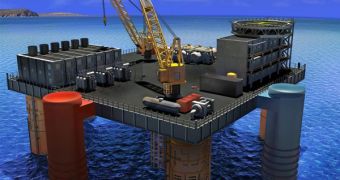Officials at the Lockheed Martin corporation announce that the company has just received a $4.4 million contract from authorities in the United States. The money is meant to further and support the development of an Ocean Thermal Energy Conversion (OTEC) pilot plant design.
The renewable energy facility will be constructed off the coast of Hawaii, and will represent one of the first plants of this type. The proof-of-principle for this technology is in place, but practical applications still need to be confirmed.
According to officials at the US Naval Facilities Engineering Command (NFEC), the new contract is basically an extension to the $8.1 million one that Lockheed Martin received last year.
The basic goal of the agreements is for a team of industry experts, led by scientists at Lockheed Martin, to develop key components and technologies related to OTEC, in a manner that is both affordable and efficient.
This type of power plants work by harnessing the temperature differences between the warm waters near the surface of the ocean and the much cooler ones underneath. This is an inexhaustible source of clean energy.
Unlike solar and wind energies, it can function at all times, day and night, regardless of weather conditions, and provides a virtually limitless potential to what can be achieved.
“OTEC is an ideal energy generation technology for shoreline communities and military bases in tropical areas, some of which are largely dependent on imported fossil fuels for power and transportation,” explains the Lockheed vice president for energy and government programs, Chris Myers.
“We are applying our decades of experience designing and deploying maritime systems for defense markets to ocean power, helping to produce clean energy,” he goes on to say.
The corporation built the first experimental platform to demonstrate the new technology back in the 1970s. Dubbed the mini-OTEC, this small facility remains the only floating platform for testing this technology.
It is also the first to produce more electricity than what it needs to support its own operations. In 2008 and 2010, the US Department of Energy (DOE) awarded Lockheed Martin with contracts to continue research in this technology.
In addition to researching this energy production method, Lockheed is also interested developing next generation alternative energy generation, energy efficiency, management, and environment and climate monitoring.
The reason why technologies such as OTEC are researched is because they provide a steady source of energy. Solar power needs the Sun, and cannot work at night and when its cloudy. Wind turbines have their limitations in terms of speed and the weather they can run in.
But the energy of the ocean and that of the Earth (geothermal energy) can be harness at all times, and is renewed.

 14 DAY TRIAL //
14 DAY TRIAL //